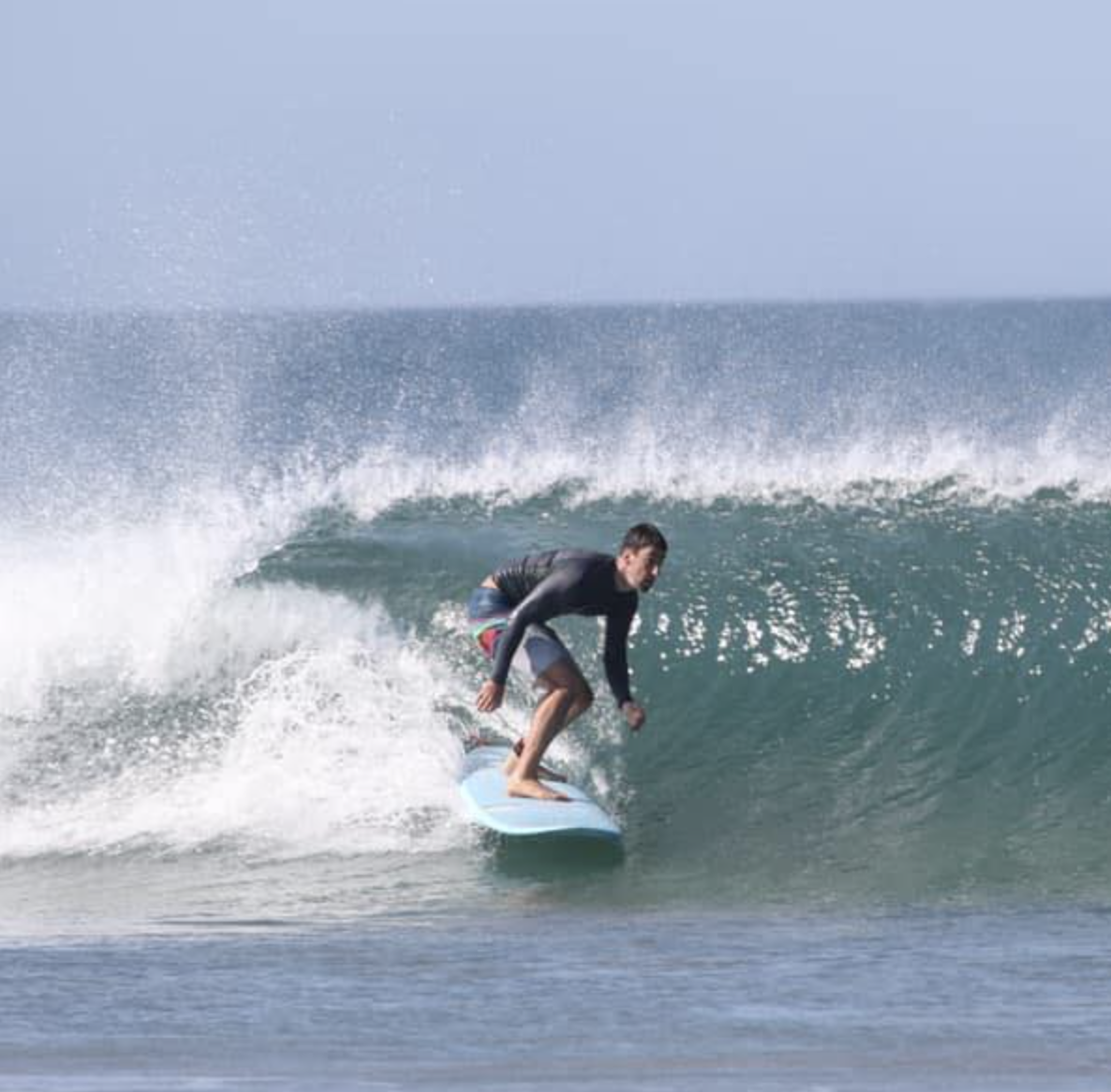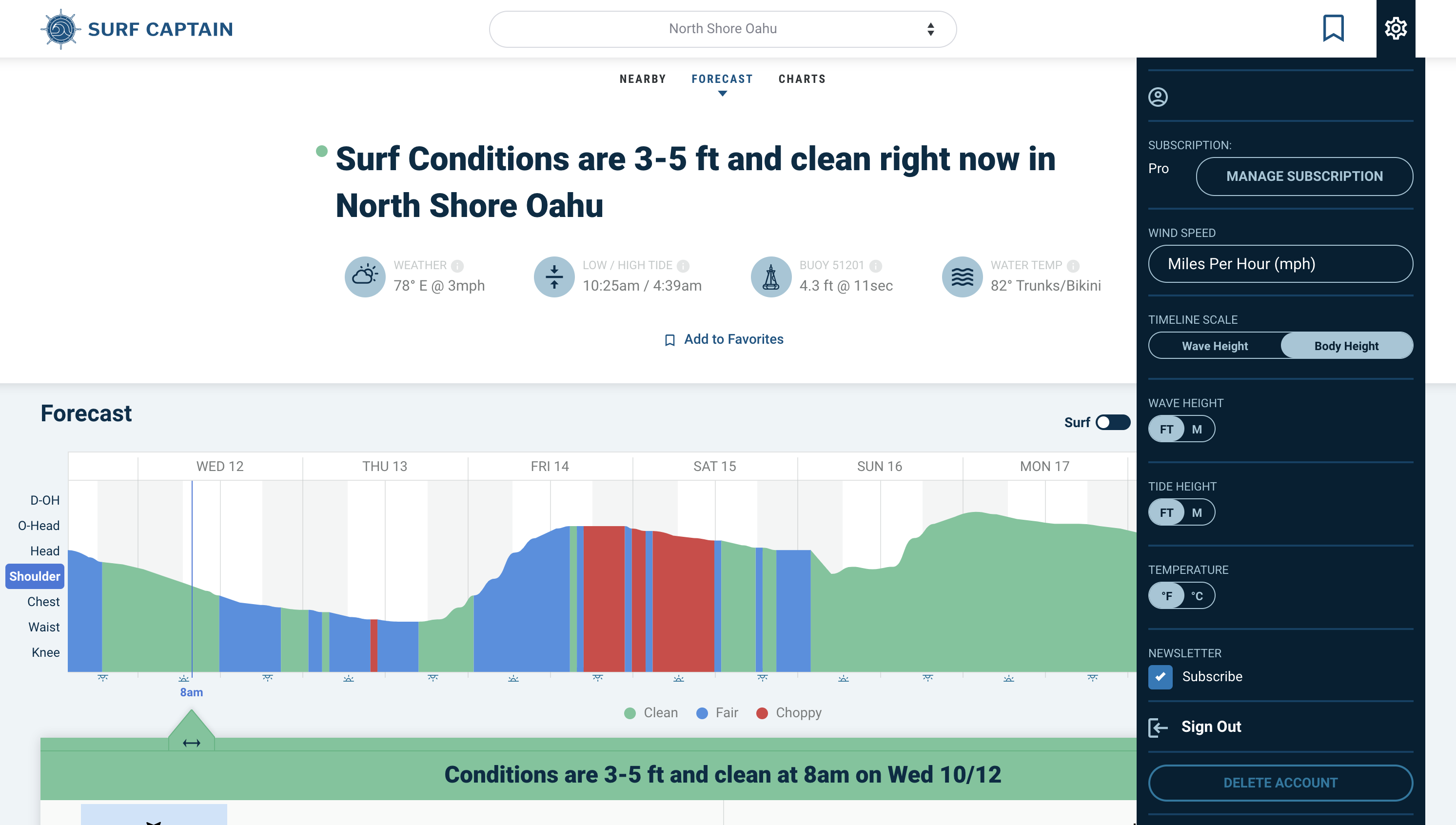The Surf Captain forecast can now show the surf timeline graph in wave heights units in contrast to the old body height scale. While the body height scale has some advantages there were some disadvantages we wanted to improve upon.
The biggest disadvantage of the body height scale was the non-linear nature of the graph, and the difficulty in discerning changes in the wave size when the surf was overhead. For example, it could be challenging to see the changes clearly when the surf was a little overhead (7ft) compared to significantly overhead (10ft). Below is an example taken from the North Shore, Oahu forecast comparing the two different scales.
As you can see in the example above, there isn't a significant change in the surf height trend until the wave heights get well overhead and its much easier to see this change using the wave height scale.
The new wave height scale works like this: The minimum scale will go from flat -> 10ft. This will line up nicely compared to the body height scale when the surf is overhead or below. When the surf goes bigger than 10ft, then the scale will get bigger to accommodate the bigger surf.
The new wave height scale is currently available on the web app, but will be pushed to the iOS and Android apps soon. We do understand that not everyone likes change, and so while the wave height scale is now the default, you can change this in your user settings:
As a side note, we realize that the nature of judging wave heights is often a subjective matter based on individual perspective. This perspective often changes based on location and wave types. While, we think 4 feet is certainly more objective than chest high, we realize that not everyone will judge a 4 foot wave the same. The recently updated Surf Captain algorithm approach will however normalize what a 4 foot wave height is across all of our forecasts and wave types.
We always appreciate any feedback, so please feel free to let us know what you think of the new wave height scale.



